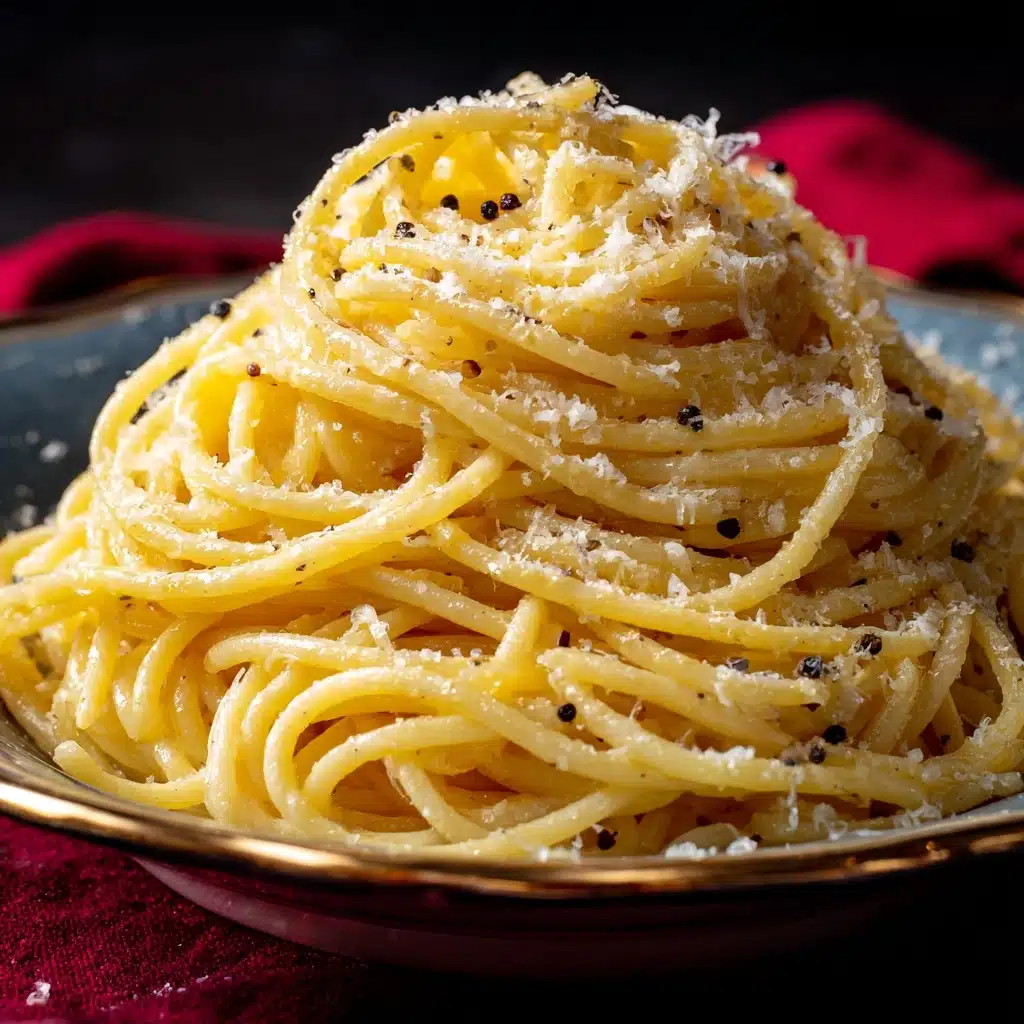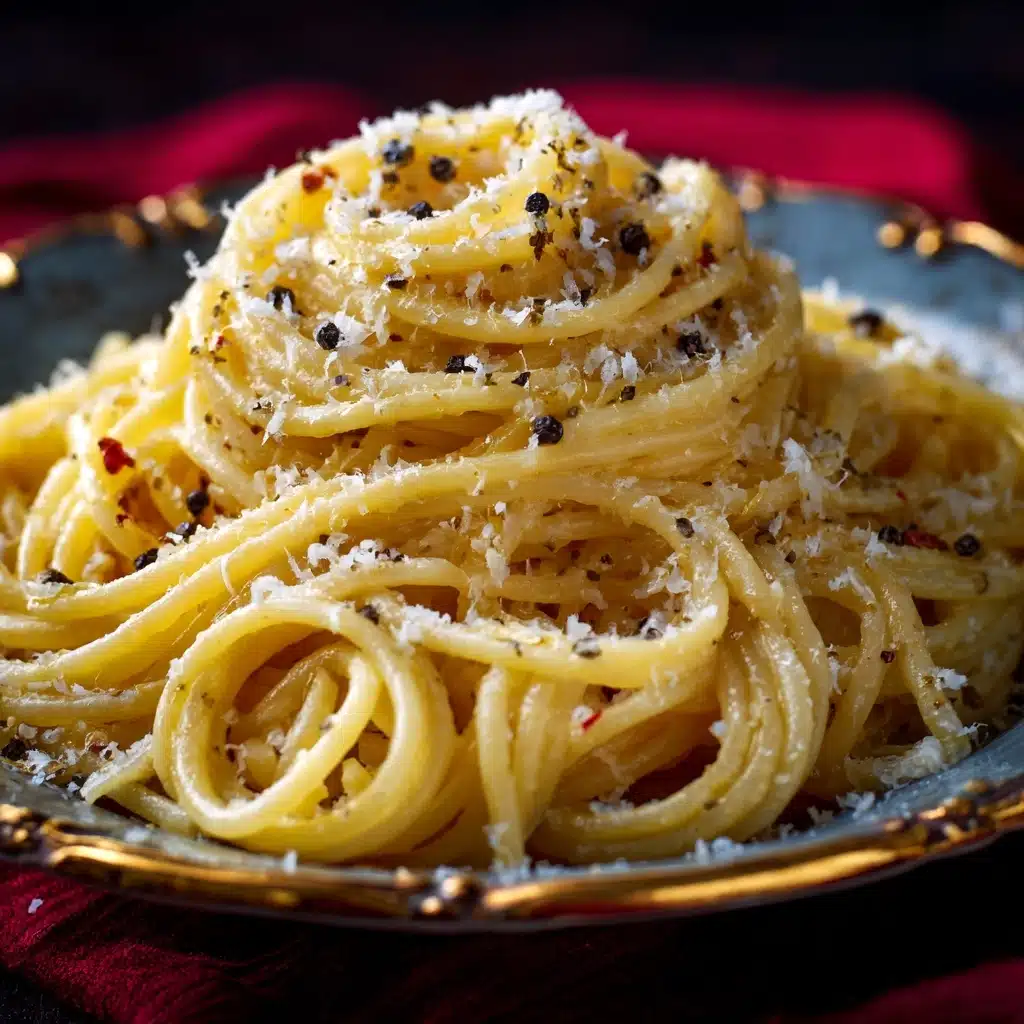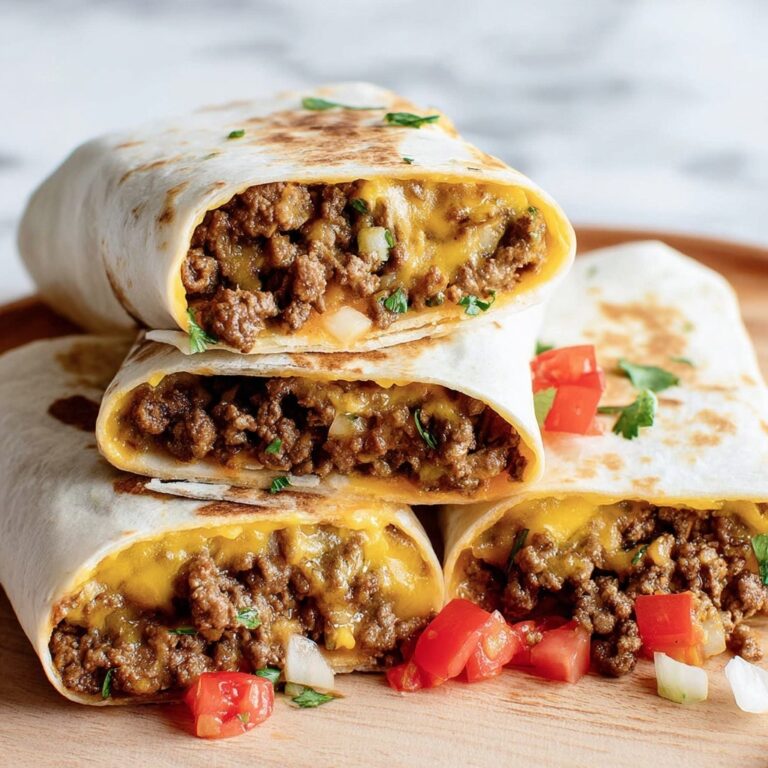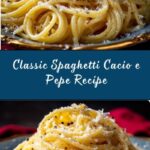If you’re ready to fall in love with a bowl of pasta, Spaghetti Cacio e Pepe is your ticket straight to bliss. This iconic Roman dish is the ultimate celebration of simplicity: just pasta, sharp Pecorino Romano, punchy black pepper, and a touch of butter come together in minutes to coat every strand with a lush, creamy sauce. It’s all about the beauty of perfect technique and the magic that happens when humble ingredients are treated with respect — and wow, does it ever deliver!
Ingredients You’ll Need
Just a handful of ingredients stand between you and Spaghetti Cacio e Pepe perfection. Each choice you make — especially the cheese and the pepper — adds its own unique character to the whole experience. Here’s what you’ll need and why each one matters:
- Spaghetti: The classic base for this dish; its texture and starchiness help create the creamy sauce.
- Pecorino Romano cheese: Salty, sharp, and crumbly; freshly grated cheese is key for a smooth, emulsified sauce.
- Freshly ground black pepper: Don’t skimp! Freshly cracked peppercorns release potent oils and an unbeatable aroma.
- Unsalted butter: Adds a whisper of richness that ties the cheese and pepper together beautifully.
- Salt (for pasta water): Generously seasoning your boiling water deeply flavors the pasta itself.
How to Make Spaghetti Cacio e Pepe
Step 1: Cook the Spaghetti
Bring a big pot of well-salted water to a rolling boil. Add your spaghetti and cook just until al dente, giving it a good stir now and then so nothing sticks. Before draining, dip a measuring cup into the pot and save about a cup of that starchy pasta water — this will become your secret to a silky sauce later on.
Step 2: Toast the Pepper
While the pasta cooks, grab a large skillet and set it over medium heat. Add the freshly ground black pepper and toast it for about a minute. You’ll start to smell its citrusy, spicy aroma — this little step opens up mountains of flavor you’d never get from un-toasted pepper.
Step 3: Melt the Butter and Build the Sauce Base
Add the butter to your skillet and let it melt right into the pepper. Once it’s foamy and fragrant, splash in about half a cup of your reserved pasta water. Bring everything to a light simmer; the water’s starches will help marry the cheese and butter later.
Step 4: Toss the Spaghetti
Add the drained spaghetti straight into the skillet with the bubbly, peppery butter. Using tongs, toss and turn the pasta to coat every single strand. That luscious buttery-pepper water is already sneaking flavor into the noodles!
Step 5: Add Cheese and Finish the Sauce
Take the skillet off the heat — this is important so your cheese melts instead of clumping. Sprinkle in the grated Pecorino Romano, a little at a time, tossing quickly and constantly. This is the magic moment for Spaghetti Cacio e Pepe! If the sauce seems thick, stir in a splash more reserved pasta water, just a tablespoon at a time, until everything looks silky and creamy. Serve right away, piping hot and showered with extra cheese and pepper if you like.
How to Serve Spaghetti Cacio e Pepe
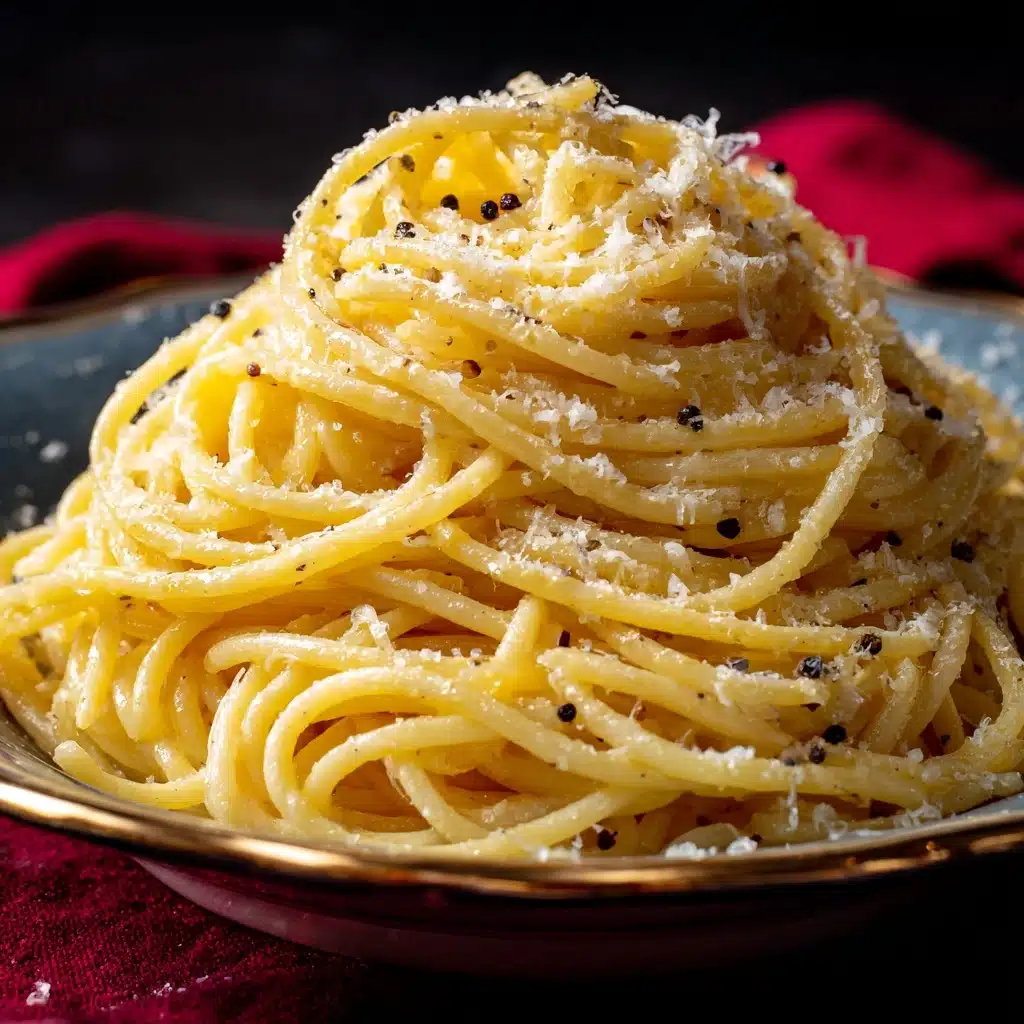
Garnishes
For a truly authentic touch, keep it simple: a final dusting of freshly cracked black pepper and a cloud of extra Pecorino Romano does wonders. If you’re feeling a little adventurous, a sprinkle of lemon zest adds brightness without overshadowing the traditional flavors.
Side Dishes
Let Spaghetti Cacio e Pepe be the star! Pair it with something light like a crisp arugula salad dressed with olive oil and lemon, or some roasted asparagus. A hunk of rustic Italian bread helps mop up any creamy sauce you don’t want to waste.
Creative Ways to Present
Make it fun and impressive by twisting the pasta into little nests on each plate, then topping with a drizzle of olive oil and a dramatic shower of cheese. For a dinner party, serve Spaghetti Cacio e Pepe tableside right from the pan — watching the sauce come together is half the show.
Make Ahead and Storage
Storing Leftovers
If you have leftovers (and that’s a big if!), cool the pasta completely and pack it into an airtight container. Refrigerate for up to 2 days. The sauce may thicken in the fridge, but don’t worry — it’ll loosen up again when reheated.
Freezing
Freezing is not ideal for Spaghetti Cacio e Pepe, as the delicate cheese sauce can turn grainy and lose its magic. If you must freeze, do so in small portions for up to a month, but expect some textural changes when you thaw it.
Reheating
To bring back the creamy consistency, reheat your pasta in a nonstick pan over low heat with a splash of water or milk. Stir gently and add a bit more grated cheese if you want. Avoid microwaving if you can — gentle heat helps keep the sauce from breaking.
FAQs
Why does my cheese clump or get stringy in the sauce?
This usually happens if the cheese is added over too much heat, or if it’s pre-shredded and coated with anti-caking agents. Always use freshly grated Pecorino Romano and stir it in off the heat for the best, creamiest results.
Can I substitute Parmesan for Pecorino Romano?
While Parmesan can work in a pinch, it’s milder and less salty than Pecorino Romano. For that unforgettable zing Spaghetti Cacio e Pepe is famous for, try to stick with the classic cheese if possible.
How coarse should the black pepper be?
Freshly cracked pepper makes a world of difference, so use a pepper mill set on a medium-coarse grind. Too fine, and the pepper will disappear into the sauce; too coarse, and it can overwhelm the dish.
Is it okay to use another type Main Course
Spaghetti is traditional and does the best job of soaking up that velvety sauce, but you can safely try tonnarelli or bucatini if you’d like a twist. Shapes with lots of surface area, like linguine, can also work well.
Can I make Spaghetti Cacio e Pepe gluten-free?
Absolutely! Use your favorite gluten-free spaghetti and keep an eye on the texture — some brands cook a bit faster. The sauce itself contains no gluten, so everyone can enjoy this timeless Roman specialty.
Final Thoughts
There’s a reason Spaghetti Cacio e Pepe has won loyal fans for generations: it’s joy in a bowl, ready in twenty minutes, and every bite feels a little bit like a hug. Trust yourself with the simple steps, use the best ingredients you can find, and I promise you’ll crave this dish again and again. Here’s to sharing the joy — buon appetito!
Print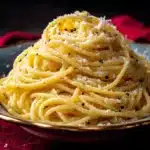
Spaghetti Cacio e Pepe Recipe
- Prep Time: 5 minutes
- Cook Time: 15 minutes
- Total Time: 20 minutes
- Yield: 4 servings
- Category: Main Course
- Method: Stovetop
- Cuisine: Italian
- Diet: Vegetarian
Description
A classic Italian pasta dish, Spaghetti Cacio e Pepe is a simple yet flavorful recipe that combines al dente spaghetti with a creamy blend of Pecorino Romano cheese, black pepper, and butter. This quick and easy dish is a favorite for cheese and pasta lovers.
Ingredients
Spaghetti Cacio e Pepe:
- 12 ounces spaghetti
- 1 cup finely grated Pecorino Romano cheese
- 2 teaspoons freshly ground black pepper
- 2 tablespoons unsalted butter
- Salt (for pasta water)
Instructions
- Boil the Spaghetti: Bring a large pot of salted water to a boil and cook the spaghetti until al dente, reserving about 1 cup of the pasta water before draining.
- Toast the Pepper: In a large skillet over medium heat, toast the black pepper for about 1 minute. Add the butter and let it melt.
- Make the Sauce: Add about 1/2 cup of the reserved pasta water to the skillet and bring it to a simmer. Add the drained spaghetti and toss to combine. Remove from heat and gradually stir in the Pecorino Romano to create a creamy sauce.
- Adjust Consistency: Add more pasta water if needed to loosen the sauce. Serve immediately with extra cheese and pepper if desired.
Notes
- Use freshly grated cheese for the best texture—pre-shredded cheese may clump.
- Stir vigorously off heat to help the cheese melt smoothly without separating.
- This simple dish relies on high-quality ingredients.

